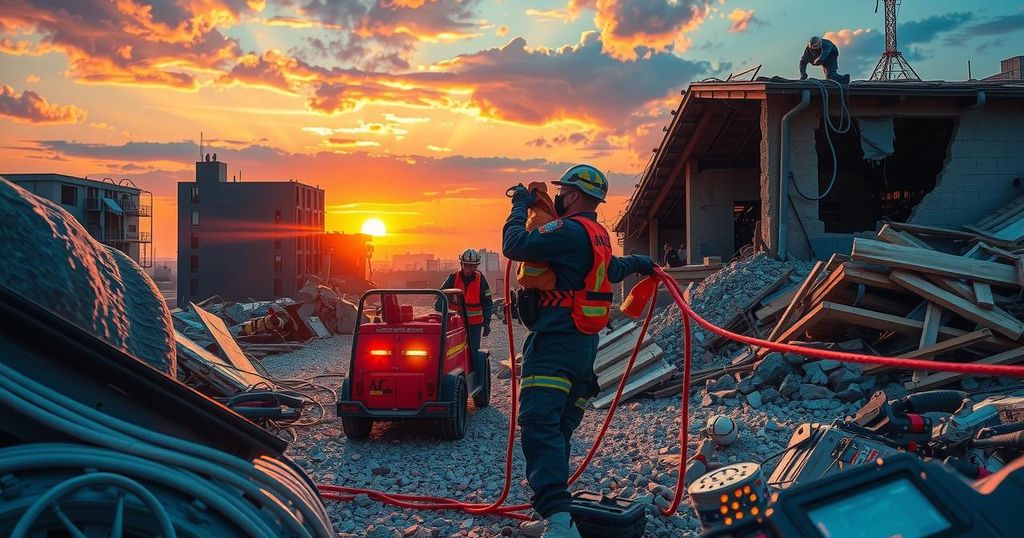Myanmar Earthquake: Rescue Efforts Amid Rising Death Toll and Humanitarian Crisis

An earthquake in Myanmar has led to a rising death toll projected to surpass 3,000, amidst ongoing civil conflict and humanitarian crises. Rescue efforts have resulted in some remarkable saves, but the need for shelter, water, and medical aid is critical. Concerns grow over the military’s ability to facilitate incoming humanitarian assistance, as millions remain displaced and in dire need.
A devastating earthquake in Myanmar has resulted in a rising death toll expected to surpass 3,000, severely complicating an already dire humanitarian situation due to ongoing civil conflict. Rescuers have managed to save individuals, including a 63-year-old woman, but the critical search window for survivors is rapidly closing. The United Nations reported significant shortages of essential supplies such as shelter, clean water, and medical care.
General Min Aung Hlaing announced that approximately 441 individuals remain unaccounted for following the 7.7 magnitude earthquake. The United Nations’ Office for the Coordination of Humanitarian Affairs emphasized the urgency of the situation, stating that communities are increasingly facing acute shortages of basic necessities. The organization has warned that the need for immediate response and aid is escalating as conditions worsen.
The earthquake caused substantial damage, with over 10,000 structures reported collapsed or heavily damaged across central and northwest Myanmar. Meanwhile, in nearby Bangkok, a construction accident linked to the quake resulted in fatalities, leading to scrutiny over possible design deficiencies in the building industry. An investigation has been initiated to ascertain the cause of the collapse.
Rescue operations have seen commendable efforts; however, challenges persist due to slow foreign aid arrival and inadequate machinery in affected regions. Notably, a Chinese rescue team saved a young child and a pregnant woman trapped for over 60 hours in a collapsed apartment complex. Such rescues offer a glimmer of hope amid a bleak situation.
In addition to the immediate impacts of the earthquake, ongoing conflicts have already displaced millions of people in Myanmar. The military’s takeover in 2021 has exacerbated the humanitarian crisis, pushing many regions into turmoil and complicating aid delivery. The National Unity Government has called for direct intervention to ensure aid reaches those most in need, highlighting the potential for further suffering if military actions continue to obstruct humanitarian efforts.
Despite historical reluctance from the military to accept foreign assistance, they have signaled openness to external help in this instance. While the severity of the situation demands urgent action, it remains to be seen whether the military will facilitate aid distribution effectively. Observers stress that humanitarian needs must be prioritized over military objectives to ensure survival and rehabilitation for affected individuals.
In conclusion, the earthquake in Myanmar has exacerbated an already critical humanitarian disaster, with the death toll expected to exceed 3,000. Rescue efforts are ongoing, but significant challenges such as supply shortages and ongoing civil war impede recovery. The global community’s response, along with the humanitarian needs of millions, must take precedence to avert a deeper crisis. The unfolding situation requires vigilant attention to ensure that aid reaches those suffering the most, particularly as the country grapples with the dual challenges of natural disaster and conflict.
Original Source: www.cbsnews.com







